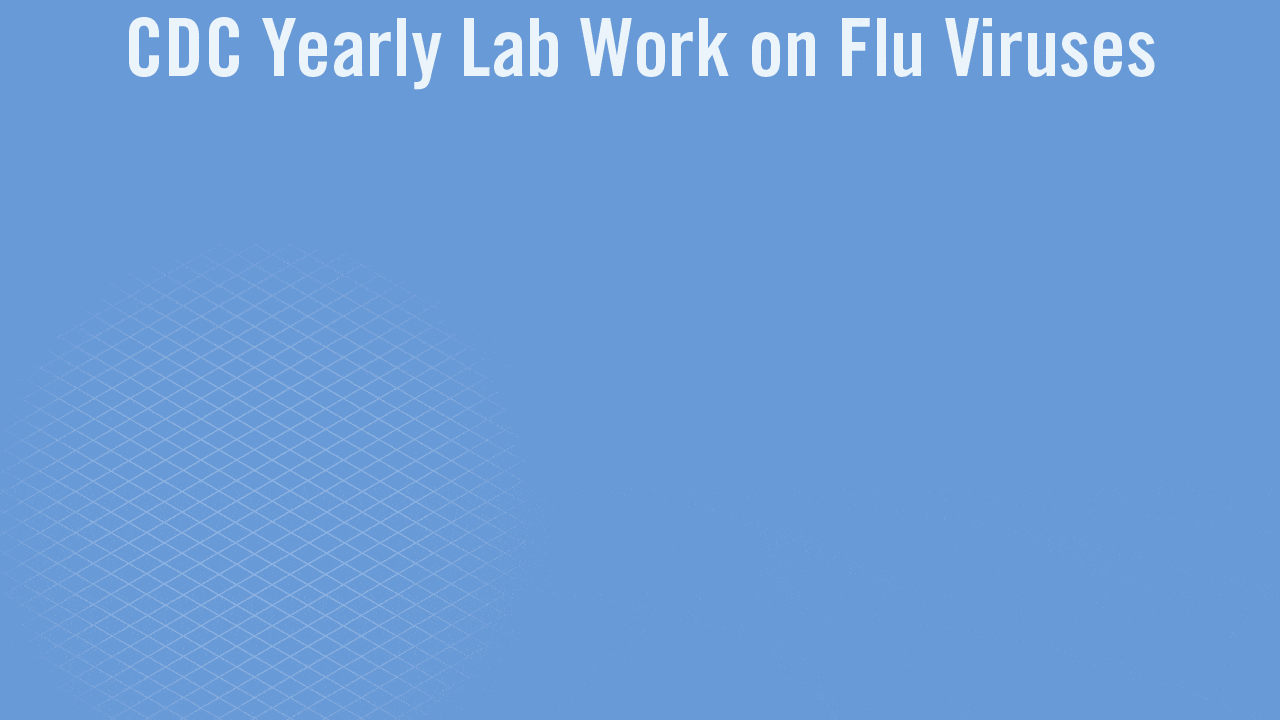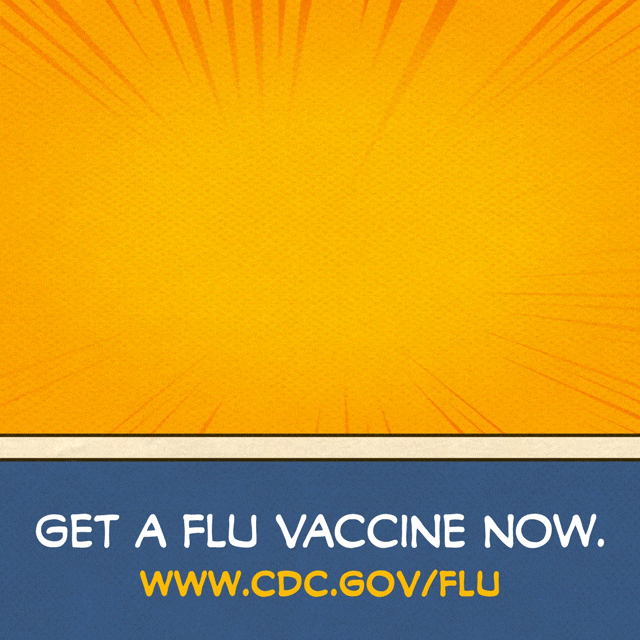Flu Vaccine Benefits Go Beyond Effectiveness of One Strain
Dec 11, 2017
 Guest post by Litjen (LJ) Tan, MS, PhD; co-chair and co-founder of the National Adult and Influenza Immunization Summit.
Guest post by Litjen (LJ) Tan, MS, PhD; co-chair and co-founder of the National Adult and Influenza Immunization Summit.
There seems to be a lot of speculation recently about how effective the influenza (flu) vaccine will be at preventing cases of influenza this season.
We have heard suggestions that the vaccine may only be 10% effective against flu this year, that there may be mismatches in the vaccine compared to the influenza strains that are circulating, and thus, that the vaccine is not worth getting.
To address these concerns I will start with a basic explanation of flu and flu vaccines, and then discuss the factors that play into vaccine effectiveness.
First, let me say that influenza is a serious respiratory infection that is responsible for about 30% of all the respiratory infections during the winter season. When I say serious, I mean that flu can keep you down for a week or more, and you will feel completely miserable. Additionally, each year thousands of people of all ages die from flu in the U.S.; it can be very dangerous. So, that office colleague who said that he was out with the flu yesterday very likely did not have influenza. Not fully understanding the dangers of flu is why some people fail to see the value of flu prevention.
Flu is caused by multiple strains of influenza viruses that circulate during the winter season; specifically, we have influenza type A (with the H3N2 and H1N1 strains) and influenza type B (there are two type B strains that can circulate and currently 90% appear to be the Yamagata lineage, but since it is still so early in the season and sample sizes are small, this data point may not be statistically significant). Because these strains of flu viruses can switch every season in terms of dominance, and can also mutate, manufacturers need to develop a new influenza vaccine every year and people need to be re-vaccinated each year.
To be clear, the vaccine development process is the same every year, it is just that the starting, or “seed”, vaccine virus that we immunize against has to be identified before it can be used to develop our country’s annual vaccines.

When that seed virus is identified, it is then amplified (or passaged) to develop more seed virus. Then that seed virus is further amplified to create the large quantities of vaccine virus that we ultimately need to prepare an adequate supply of vaccines to protect our population. That amplification of the seed virus, and the making of large amounts of vaccine virus, can occur in eggs, which is the more traditional way, or it can also occur in cell cultures. So there needs to be four seed viruses developed and amplified to create influenza vaccines – an H3N2 seed, an H1N1 seed, and the two B seed viruses.
So why do we keep hearing people say that this year’s flu vaccine may only be 10% effective? Where did that suggestion come from?
When we say that a flu vaccine is 10% effective, what we usually mean is that it was effective in preventing 10% of cases of influenza in those who were vaccinated. This 10% number that you may have heard is actually a data point from Australia, and it’s not against all strains of flu, but specifically against the H3N2 strain that dominated the southern hemisphere this past flu season. If you look at the Australian data for all influenza, the vaccine effectiveness goes up to 33%. Agreed, that’s not great for Australians (although, it’s still better than no protection), but is looking at the Australian data truly reflective of what might happen in the US?
It’s unlikely, and here’s why.
In the U.S. last season, vaccine effectiveness was 39% and effectiveness against the H3N2 strain was 32%. It is important to recognize that the U.S. surveillance includes much larger sample sizes than Australia and that examining the vaccine effectiveness against H3N2 in the U.S. last season is probably a more appropriate comparison and better predictor of what may happen here in the U.S. this season. Finally, if you look back beyond just last season, the observed vaccine effectiveness against the H3N2 strain in the U.S. has consistently been about 30 – 40%.
And remember, that even though this season appears to be dominated by the H3N2 strain of flu, the surveillance data is already indicating that there are H1N1 strains and B strains circulating as well, and the vaccine also protects against those! Multi-year pooled vaccine effectiveness against influenza B viruses is 54%, and against influenza H1N1 viruses was 61%!
So, do not let fear of potentially lower effectiveness against one strain, H3N2, stop you from realizing the benefits of the vaccine against the other strains of influenza!
Why are we also hearing concerns of mismatches in the vaccine virus. Where is that misinformation coming from?
It’s not uncommon for rumors of mismatches to circulate among the public, but it’s important to get the facts. Fortunately, the most recent data in the U.S. so far this season indicates that the vaccine viruses are actually a good match for the circulating viruses. Where this mismatch conversation is coming from is a recent commentary published in the New England Journal of Medicine suggesting that one reason why the vaccine effectiveness for H3N2 tends to be lower than for the other influenza viruses could be due to egg-adaptation.
What this means is that when the seed viruses were passaged through eggs, the virus adapted to growing well in eggs, developed some antigenic change, and potentially resulted in a less effective vaccine virus. The majority of the influenza vaccines are developed in eggs and so this challenge could be very real. But influenza vaccine technology is advancing and there are now two influenza vaccines in the U.S. that avoid the use of eggs; the recombinant and the cell-culture vaccines. In these recombinant and cell-grown vaccines, the H3N2 components are genetically more similar to circulating H3N2 viruses than the egg-adapted viruses used in manufacturing the final vaccines. However, there is no data at this time to indicate that cell-based or recombinant vaccines are more effective than egg-based vaccines, and hence there is no preference for one or the other. It is far better to get vaccinated than to hold out for one of these two vaccines.
Finally, the benefit of influenza vaccines goes beyond their ability to prevent incidence of flu.

It is a mistake to only consider the benefits of flu vaccine in terms of disease prevented. Influenza vaccines do so much more in terms of preventing hospitalizations and medical visits because of influenza infection. And if you do happen to get flu but are vaccinated, it is much more likely that you will not suffer as severely as you may if you hadn’t been vaccinated. This is especially important in those over 65 years of age for whom influenza can have very serious consequences. There is a concept known as vaccine preventable disability — in which getting a flu vaccine can prevent severe illness which can lead to a loss in quality of life, particularly in an older person. Often, a person over 65 will walk into a hospital with influenza, but may leave the hospital relying on a walker.
As for vaccine benefits to children, a recent study showed that influenza vaccination reduced the risk of flu-associated death by half (51%) among children with underlying high-risk medical conditions, and by nearly two-thirds (65%) among healthy children.
And finally, do not forget that by getting vaccinated you can reduce transmission of the flu, since people are often infectious before they have symptoms. This helps protect the vulnerable people around you, like babies and young children, older people, and people with certain chronic health conditions.
What are you waiting for?
Why gamble on whether this will be a severe flu season? Why concern yourself with whether one strain will match or not? Why wait when the overall benefits of getting influenza vaccination far outweigh any concerns about vaccine effectiveness or egg-adapted mismatches.
That is why so many medical professionals and scientists strongly urge influenza vaccination for everyone six months of age and older – not only this year, but each and every year, and as soon as the vaccine becomes available in your area.

Litjen (LJ) Tan, MS, PhD, is chief strategy officer of the Immunization Action Coalition, an editor for Vaccine, BMC Infectious Diseases, Medscape Infectious Diseases, and a member of the ESCMID Vaccine Study Group. He received his master of science degree in biology at New York University and earned his doctorate of philosophy in microbiology/immunology from Northwestern University Feinberg School of Medicine in Chicago.
Dr. Tan’s current appointments include serving as a special consultant for the European Union Influenza Summit and the Asia-Pacific Influenza Summit, and serving as a member of the Advisory Board for Unity (United for Adolescent Vaccination) Consortium, the 317 Coalition, and the AMGA’s Adult Immunization Collaborative, to name a few.
Related Posts
The Public Health Emergency (PHE) declaration is ending on May 11, but COVID remains a threat. The PHE was first declared in 2020 in response to the spread of COVID-19 to allow for special...
This post was originally published with MediaPlanet in the FutureOfPersonalHealth.com Winter Wellness Issue, and was written by Vaccinate Your Family. Are you more likely to get sick during the winter? Yep – more viruses...
Leave a Reply